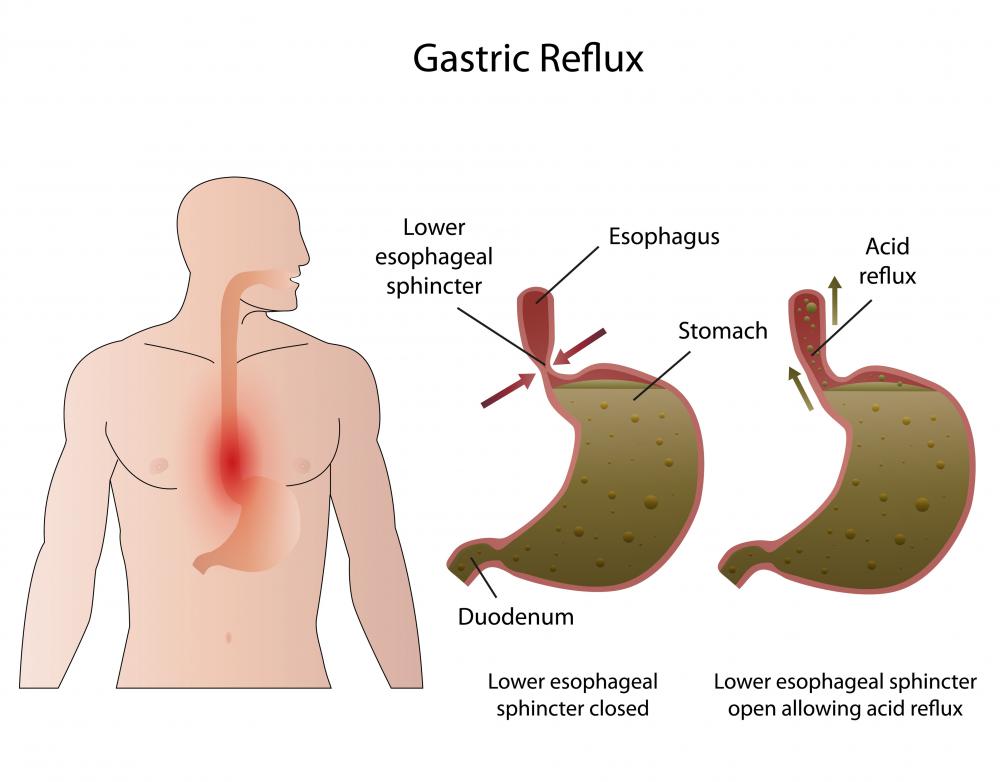At WiseGEEK, we're committed to delivering accurate, trustworthy information. Our expert-authored content is rigorously fact-checked and sourced from credible authorities. Discover how we uphold the highest standards in providing you with reliable knowledge.
What is an Esophageal Ulcer?
The esophagus is a long tube that is the food highway from the mouth to stomach. Sometimes tissue deteriorates or holes form in the lower part of it right at the stomach-esophagus connection. When one of these holes forms it is called an esophageal ulcer, and this can create uncomfortable symptoms that are best resolved through early treatment.
There are often several conditions occurring at once when an esophageal ulcer forms. First, most of these ulcers are caused primarily by bacterial infection. Yet, people tend to be at far greater risk for esophageal ulcers if they have other conditions like gastrointestinal reflux disease or GERD. Other people at high risk include those with bulimia, those who smoke, and those who drink alcohol to excess.

The symptoms of an esophageal ulcer may not be that different than symptoms of other peptic ulcers. People may have pain in the stomach, particularly late at night. Some people experience vomiting of blood. Occasionally pain is felt after eating fatty or particularly acidic foods or large meals. Blood might also be present in stool, or stools could look black and tarry, suggesting internal bleeding.

These symptoms are a very good reason to see a doctor right away. They are likely to only worsen, especially if an ulcer expands. For diagnosis, doctors usually turn to several different methods. These could include barium x-rays, which use radioactive material to better visualize the areas examined. Endoscopy is another potential diagnostic tool and involves using a scope to thoroughly explore the esophagus, and possibly the stomach.

The most common treatment for an esophageal ulcer is first to give antibiotics to end the infection, but this may not fully resolve the conditions that contributed to ulcer formation. Treatment for the esophageal ulcer must also consider the factors that may worsen the problem. Therefore, somebody with a condition like GERD may be urged to used medicines that reduce stomach acid and which could prevent future ulcers. Clearly bulimic behavior would suggest need for, at minimum, counseling and support.

Though ulcers aren’t particularly linked to diet, some suggestions about diet and other behaviors might be made. These could include eating lower acid foods and counseling to lose weight if needed. People who are smoking are urged to stop, and those who drink might be counseled to lessen or give up this practice.
Sometimes antibiotics, acid reduction and behavior changes aren’t enough to adequately treat an esophageal ulcer. Occasionally surgery must be performed to close the hole or prevent it from increasing in size. These surgeries may vary in how they are performed and length of recovery, and they may still be followed by standard esophageal ulcer treatments.
AS FEATURED ON:
AS FEATURED ON:

















Discuss this Article
Post your comments